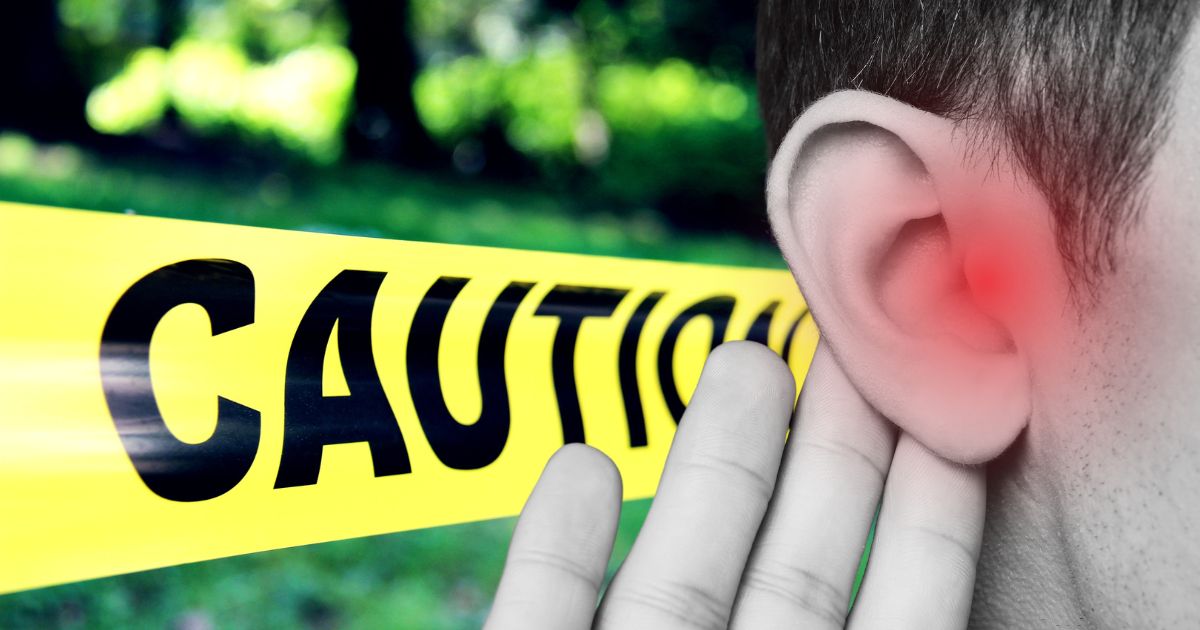Ototoxicity, a term formed from “oto” (ear) and “toxicity” (poisoning), refers to ear poisoning caused by exposure to drugs or chemicals that can damage the inner ear or vestibulo-cochlear nerve. Given the inner ear’s vital role in both hearing and balance, ototoxicity has the potential to disrupt one or both of these critical senses.
The severity and occurrence of inner ear poisoning hinge on factors such as the specific drug, exposure levels in terms of dosage, duration, and frequency, as well as additional considerations like genetic predisposition or the presence of other health conditions influencing damage susceptibility. Workplace hazards, including noise, and individual factors like age and smoking status also impact the effects of ototoxins on hearing.
Ototoxicity can manifest as either temporary or permanent, with certain substances causing reversible effects and others resulting in lasting changes to the ear structure.
- Drug Related Ototoxicity
- Chemical Ototoxins
- Increased Risk from Noise Exposure
- How Does Ototoxicity Impact the Ear?
- Who is at Risk?
- Symptoms of Ototoxicity
- How is Ototoxicity Diagnosed
- Treatment and Prevention
Chemical Ototoxicity
Ototoxicity can manifest through various channels. The most prevalent form involves the ingestion of drugs affecting the inner ear, a phenomenon extensively substantiated by research on drug-induced ototoxicity.
Other common entry routes for ototoxic substances include skin absorption, inhalation, and, to a lesser extent, ingestion (often linked to inadequate workplace safety practices).
Understanding the different mediums through which ototoxicity occurs is vital for addressing and mitigating potential risks
Drug related Ototoxicity
There are over 200 known ototoxic medications designed to combat severe infections and illnesses such as cancer and heart disease.

Notably, certain potent antibiotics and anti-neoplastic drugs utilized against life-threatening diseases are well-documented for their potential to induce auditory and vestibular dysfunction in patients. Functional impairments may encompass permanent hearing loss and tinnitus.
Many countries closely monitor the administration of these drugs, providing guidelines to manage associated risks. Common ototoxic medications include:
Aminoglycosides:
Commonly prescribed antibiotics like streptomycin and gentamicin, used to treat bacterial infections, can potentially cause hearing loss as a side effect. Even after stopping the treatment, the impact on hearing may persist.
If you’re taking these antibiotics, it’s advisable to be cautious about exposure to loud noises for at least three months after completing the treatment to reduce the risk of harm.
Mechanism of Aminoglycoside Ototoxicity:
Aminoglycosides penetrate inner ear cells, initiating a complex process that generates reactive oxygen species, leading to cell death and contributing to the hearing loss induced by these antibiotics.
Anti-neoplastic Drugs:
Certain cancer-fighting drugs, known as antineoplastic drugs, play a crucial role in treating cancer by targeting and slowing down the growth of cancer cells. One group of these drugs is platinum-based, and a common example is cisplatin.
Cisplatin, while effective against cancer cells, has a side effect that may impact hearing by potentially damaging the tiny cochlear hair cells inside the inner ear, resulting in hearing loss and often tinnitus as well.
The ototoxic effects of cisplatin can be exacerbated by exposure to noise.
Loop Diuretics:
Diuretics like furosemide, used for conditions such as high blood pressure, may induce temporary hearing loss due to disturbances in the blood flow to the ear.
Combining loop diuretics with aminoglycosides or cisplatin can amplify the toxic effects on the inner ear.
Acetyl Salicylic Acid (Aspirin):
 High doses of aspirin can result in temporary hearing loss and tinnitus, with recovery typically occurring after discontinuation. The exact mechanism is not fully understood.
High doses of aspirin can result in temporary hearing loss and tinnitus, with recovery typically occurring after discontinuation. The exact mechanism is not fully understood.
Other painkillers like quinine and chloroquine may also have potential ototoxic side effects, which can worsen with exposure to noise. Understanding these medications and their potential effects is crucial for both medical professionals and patients.
Chemical Ototoxins
While much attention has been given to drug-induced ototoxicity, the impact of chemical exposure in the workplace remains relatively unexplored.
Chemical-induced hearing loss (CIHL) is not widely recognized as a significant cause of hearing threshold shift. In many cases, individuals experiencing this type of hearing loss may not recall the specific chemical responsible, given the vast array of over 750 potentially toxic chemicals. Limited in-depth studies have been conducted, but common characteristics of ototoxic exposure include irreversible hearing loss affecting specific frequencies (3,000 to 6,000 Hz) and bilateral damage to the cochlea.
Both animal experiments and human studies suggest that certain chemical exposures can damage the hearing and balance functions of the ear.
Ototoxins, once absorbed by the body, can lead to mild to severe hearing loss, tinnitus, or even total deafness. They can enter the body through ingestion, inhalation, or skin absorption, damaging the auditory nerve or hair cells in the cochlea, akin to noise-induced hearing loss.
Once absorbed, these chemicals can travel through the bloodstream, injuring the inner ear and damaging nerves transmitting information to the brain. Over 100 substances in workplaces have been identified as potentially ototoxic, but the specific structural or chemical properties responsible for ototoxicity are not yet fully understood.

Although organic solvents are frequently identified as ototoxic chemicals, their impact on hearing frequencies differs from that of noise. Some solvents may interact with noise, and when exposure surpasses permissible levels, the combined impact can be more severe than exposure to either chemicals or noise alone. The list of chemical agents, including gases, paints, metals, and pesticides, is extensive.
High-priority ototoxins, such as toluene, xylene, styrene, n-hexane, trichloroethylene, carbon monoxide, and alcohols, pose immediate danger, and workers should avoid exposure to related products.
Chemical exposure, especially in the workplace, is often underreported but can have severe consequences as an ototoxicant. The three major classes of ototoxic chemicals found in the workplace are solvents, heavy metals, and asphyxiants.
Examples of chemicals that damage hearing:
- Solvents (e.g., toluene, styrene, xylene, ethylbenzene, and trichloroethylene)
- Metals and compounds (e.g., mercury compounds, lead, and organic tin compounds)
- Asphyxiants (e.g., carbon monoxide, hydrogen cyanide and its salts, and tobacco smoke)
- Nitriles (e.g., 3-butenenitrile, cis-2-pentenenitrile, and acrylonitrile)
- Pharmaceuticals (e.g., certain antineoplastic drugs
- Pesticides
The effect of ototoxic chemicals:
Aromatic Solvents – Toluene and Styrene:
Toluene and styrene are widely used in industries for products like adhesives and plastics. Prolonged exposure to these aromatic solvents can harm the central nervous system and the inner ear.
Mechanisms of Aromatic Solvent Ototoxicity:
Aromatic solvents likely affect hearing by chemically poisoning hair cells, leading to disorganization of their membranous structures. Acute effects may result from direct solvent action, while chronic effects involve the formation of reactive intermediates, including reactive oxygen species.
These intermediates may cause cell death and dysfunctions in transmembrane K+ fluxes crucial for (ear) hair cell physiology during acoustic stimulation.
Neuropharmacological Effects of Solvents:
Inhaled solvents, like toluene, have specific effects on various ion channels in neurons. These effects may enhance inhibitory synaptic responses and alter the function of receptors involved in central nervous system function. Toluene, among other aromatic solvents, can affect the middle-ear acoustic reflex, indicating potential impacts beyond the peripheral auditory system. Co-exposure to noise and aromatic solvents may have synergistic effects on hearing loss.
Other substances that have been identified to be ototoxic or are strongly suspected to have ototoxic potential include:
- Halogenated hydrocarbons: polychlorinated biphenyls, tetrabromobisphenol a, hexabromocyclododecane, hexachlorobenzene
- Bromates: Sodium bromate, potassium bromate
- Tobacco smoke
- Other substances: Pesticides (organophosphates, paraquat, pyrethroids, hexachlorobenzene), polychlorinated biphenyls, etc.

When substances with the potential to harm the ears (ototoxicants) can be absorbed through the skin (dermal), they are expected to possess specific physicochemical characteristics:
- They should consist of small molecules, typically with a molecular weight less than 1000 g/mol (Daltons), and some experts specify a molecular weight of less than 500 g/mol (Daltons). These molecules should easily penetrate the skin.
- Additionally, they should be lipophilic, meaning they have an affinity for combining with or dissolving in lipids or fats.
Examples of lipophilic substances with a molecular weight less than 500 g/mol (Daltons) include solvents like hexane, benzene, toluene, styrene, and chlorinated solvents such as chloroform, tetrachloroethylene, carbon tetrachloride, and methylene chloride.
Combination with Noise Exposure
The simultaneous exposure to both ototoxicants and noise raises significant concerns, especially considering that this co-exposure is not limited to the workplace but can occur in various settings. While noise pollution often goes unnoticed in daily life, the escalating presence of chemical air pollutants compounds the risk for widespread exposure among the general public.
The repercussions extend beyond hearing damage, necessitating solutions to mitigate the adverse consequences associated with the combined impact of noise and chemical exposure.
Research has shown that many ototoxicants interact with noise during co-exposure, either intensifying the impact of noise on the ear (potentiation) or causing more extensive hearing damage than expected from each exposure individually (synergism).
Managing occupational exposure to ototoxicants, especially in the presence of noise, poses a formidable challenge due to the intricate nature of workplace exposure and the absence of established “ototoxic thresholds” – concentrations at which exposure to a substance initiates hearing loss.

Understanding the risks of hearing loss at work due to ototoxicants is not well-explored. While some solvents and heavy metals are recognized as potential contributors to hearing problems based on research, there is limited comprehensive study on the overall impact of ototoxicant exposure in the workplace.
Scientific evidence, primarily gathered from studies on animals, emphasizes that exposure to specific chemicals and the combined effects of noise and ototoxic substances can result in hearing problems. The actual dangers faced by workers exposed to these chemicals, either alone or in combination with noise, highlight the importance of considering data from animal studies.
Current scientific knowledge suggests the necessity of taking precautionary measures in workplaces where employees deal with chemical exposure, emphasizing the need for proactive steps to protect auditory health.
How Does Ototoxicity Impact the Ear?
 Hair cells are situated in both the cochlea and the vestibular regions of the inner ear, consisting of a cell body with hair-like attachments. Under normal circumstances, these “hairs” respond to sound vibrations or movement by bending, transmitting electrical signals to the brain related to hearing or balance.
Hair cells are situated in both the cochlea and the vestibular regions of the inner ear, consisting of a cell body with hair-like attachments. Under normal circumstances, these “hairs” respond to sound vibrations or movement by bending, transmitting electrical signals to the brain related to hearing or balance.
However, ototoxicity can harm these hairs to the extent that they no longer stand upright, diminishing the auditory and/or balance signals conveyed to the brain.
Currently, ototoxicants are thought to impact or damage auditory function through various mechanisms, including:
Impairing Cochlear Structure or Function:
- Inducing degeneration of the hair cells.
- Disrupting the membrane structure.
- Causing changes in the delicate vestibular hair cells.
- Disrupting Blood Supply and Reducing Oxygen Levels:
- Leading to ischemia (reduced blood supply) and hypoxia (lowered oxygen levels).
Simultaneously Affecting Cochlea and Central Auditory Pathways:
- Exerting an impact on both the cochlea and the central auditory pathways.
- Affecting Nerve Fibers of the Nervous System:
- Impacting the auditory, optic, and vestibular nerve fibers of the central or peripheral nervous system (CNS).
Understanding these mechanisms is crucial in comprehending how ototoxicity manifests and in developing strategies to prevent or mitigate its damaging effects on the ear.
Who is at Risk?
 Hearing loss remains a significant health concern for workers in the United States, with 16,900 cases of work-related hearing loss reported in 2019 alone, constituting around 10% of all work-related illnesses.
Hearing loss remains a significant health concern for workers in the United States, with 16,900 cases of work-related hearing loss reported in 2019 alone, constituting around 10% of all work-related illnesses.
Occupational hearing loss (OHL) is a substantial contributor, accounting for nearly 24% of hearing loss cases, affecting approximately 11.4% of the population. The potential repercussions of hearing loss are diverse, ranging from difficulties in communication with colleagues and family members to an increased risk of workplace injuries due to the inability to hear alarms or equipment noises. The extended impacts include reduced job performance in handling complex tasks, diminished quality of life, and financial burdens such as lower income and higher medical costs.
Workers are frequently exposed to various hazardous factors and substances in their work environments. For instance, a 2005 survey revealed that about 30% of European workers were exposed to noise for at least a quarter of their work time, while 11% inhaled vapors like solvents and thinners, 19% encountered smoke, fumes, powder, or dust, and 14% handled chemical substances.
Despite the long-recognized impact of occupational noise exposure on hearing, the significance of chemical-induced hearing loss should not be underestimated.
Over the past three decades, concern about the effects of chemicals on hearing has grown steadily, mirroring the increase in work-related substances and medicinal drugs. The risks become more pronounced when considering synergistic co-exposures, where physiological factors may amplify the impact of chemicals on hearing. Evidence confirms that ototoxic substances’ effects on ear function can be exacerbated by noise, identified as an emerging risk in a forecast by the European Agency for Safety and Health at Work.
Various industries, including printing, painting, construction, and mining, expose workers to both noise and chemicals, extending to public safety workers like firefighters. Studies highlight harmful chemicals in fire smoke, such as acrolein, benzene, and metals like lead, cadmium, and arsenic, known for their neurotoxic or ototoxic properties.

The risk of ototoxicity escalates when combining ototoxic medications or being exposed to chemicals and excessive noise. For instance, the combination of loop diuretics with aminoglycoside antibiotics can induce ototoxicity. Individuals with kidney problems or taking medications affecting kidney function face an increased risk of cytotoxicity when using aminoglycosides. Similarly, the combination of chemical exposure and noise heightens the risk and severity of ototoxicity.
Understanding these risks is crucial for implementing preventative measures and safeguarding the auditory health of individuals in various occupational settings.
Symptoms of Ototoxicity
Ototoxicity can manifest in symptoms affecting various components of the inner ear, including the cochlear and vestibular system responsible for balance.
- Tinnitus:
- Typically, the initial sign of ototoxicity is the presence of ringing in the ears (tinnitus).
- Hearing Loss:
- Progressive hearing loss may develop over time, sometimes unnoticed until it impacts the ability to comprehend speech.
- Balance Issues:
- Ototoxic medications can lead to balance problems, resulting in a sense of unsteadiness and potential loss of balance. The human body may adapt to these challenges, and in some cases, these problems are temporary. .
- Quality of Life Impact:
- The effects of ototoxic medications can significantly impact your quality of life. Difficulty in hearing conversations or experiencing dizziness may lead to a reduction in participating in routine activities.
Factors Influencing Balance Problems:
The severity of balance problems associated with ototoxicity is influenced by various factors, including:
- The extent of damage caused by ototoxins.
- The duration of time since the damage commenced.
- The speed at which the damage occurs (rapid or gradual).
- Whether one or both ears are affected.
Symptoms and Severity:
- Slow damage on one side may result in subtle symptoms, while rapid damage can lead to more intense manifestations such as vertigo, vomiting, and nystagmus (eye jerking). These symptoms may diminish over time.
- Severe ototoxicity can result in enduring symptoms. When both ears are affected, individuals may experience:
- Headaches
- Imbalance
- Oscillopsia (blurring or bouncing vision with head movement)
- Sensation of fullness in the ears
- Difficulty walking
- Inability to move the head
- Wide-legged walking for balance
- Challenges walking in the dark
- Feelings of unsteadiness, lightheadedness, and fatigue
How Is Ototoxicity Diagnosed?
 Monitoring your hearing and balance systems before and during treatment is crucial. Prior to initiating treatment, an audiologist should establish a baseline record of your hearing and balance. This baseline should include an audiologic hearing test incorporating high-frequency testing, word recognition, and other relevant assessments.
Monitoring your hearing and balance systems before and during treatment is crucial. Prior to initiating treatment, an audiologist should establish a baseline record of your hearing and balance. This baseline should include an audiologic hearing test incorporating high-frequency testing, word recognition, and other relevant assessments.
This initial data serves as a reference point, aiding you and your doctor in making informed decisions to modify or cease drug therapy before hearing damage occurs.
In situations where stopping or changing the drugs is not feasible, proactive steps can be taken to manage the resulting hearing loss. Throughout your treatment, periodic hearing tests are essential components of the monitoring process. These tests enable you to promptly report any observed changes in hearing, ringing in the ears, or balance issues.
Diagnosing ototoxicity relies on a combination of the patient’s medical history, symptoms, and test results. While there is no specific test exclusively for ototoxicity, a positive history of ototoxin exposure becomes pivotal for an accurate diagnosis.
Prevention and Treatment Measures for Ototoxicity
While there are some therapeutic treatments currently under development to address certain types of ototoxic exposures, there remains very limited options and therefore, prevention is crucial.
Here are essential measures for managing and mitigating the impact of ototoxicity:
- Discontinuation or Alternative Medications:
- If feasible, stop the ototoxic medication or seek alternatives with reduced side effects.
- Recognize that in some cases, terminating exposure may not be possible due to life-dependent medications.
- Hearing Aids and Cochlear Implants:
- For individuals who have sustained permanent hearing loss or tinnitus from exposure, hearing aids can be beneficial.
- Cochlear implants have shown success in cases of profound bilateral hearing loss resulting from ototoxicity.
- Balance Rehabilitation:
- Physical therapy can assist individuals experiencing a loss of balance function, helping the brain adapt to altered signals from the inner ear.
- Responsible Medication Use:
- Limit medication use to essential drugs and strictly adhere to prescribed instructions.
- Avoid concurrent use of multiple ototoxic drugs (aspirin, quinine, loop diuretics, and aminoglycosides).
- Ensure good ventilation when using potentially ototoxic airborne chemicals.
Prevention in the Workplace:
 Hierarchy of Controls:
Hierarchy of Controls:
- Avoid or replace ototoxic chemicals with less toxic alternatives.
- Improve workplace ventilation.
- Train workers on safe chemical handling.
- Provide and ensure proper use of Personal Protective Equipment (PPE).
- Exposure Limits and Monitoring:
- Recognize that exposure limits for many chemicals may pose hearing risks, especially when combined with noise exposures.
- Monitor and measure airborne ototoxicant levels to assess worker exposure.
- Worker Training and Awareness:
- Train workers on safe procedures, protective equipment usage, and potential risks.
- Establish hearing conservation programs, including regular tests.
- Control Measures:
- Eliminate or replace ototoxicants where possible.
- Implement engineering and administrative controls.
- Enforce the use of PPE.
Individual Worker Responsibilities:
 Training and Understanding:
Training and Understanding:
- Receive training on safe practices and product information.
- Understand and follow instructions in safe practices and SDS.
- Know how to use, maintain, and wear required PPE.
- Personal Hygiene:
- Follow hygiene practices, including regular skin washing.
- Avoid eating or drinking in work areas.
- Reporting and Communication:
- Report health and safety issues, including hearing or balance problems.
- Communicate with supervisors or employers when unclear about safety practices.
Industries Prone to Ototoxic Chemicals:
- Manufacturing (metal, machinery, leather, textiles, petroleum, paper, chemicals, plastics, furniture, transportation equipment)
- Mining
- Oil and gas extraction
- Utilities
- Construction
- Agriculture
- Public safety (firefighting, weapons firing, pesticide spraying)
Combined Exposure Risks:
- Job activities with both chemical and noise hazards, including printing, painting, construction, manufacturing, fueling vehicles, firefighting, and pesticide spraying, can amplify hearing damage.
Ongoing Research and Future Prospects
- Researchers are exploring preventive measures and treatments for ototoxicity.
- Evaluation of chemicals to prevent ototoxicity and potential prescription alongside ototoxic drugs is underway.
- Investigation into methods for hair-cell and nerve-cell regeneration offers hope for the future.
Understanding ototoxicity risks and implementing preventive measures are vital steps in safeguarding auditory and vestibular health, especially in occupational settings with potential exposures.
Ongoing research holds promise for advancing our ability to prevent and treat ototoxic effects
References:
- American Speech-Language-Hearing Association. (n.d.). Ototoxic Medications. https://www.asha.org/public/hearing/ototoxic-medications/
- Beaver, C., & Schneider, J. (2023). Evaluating the potential impact of ototoxicant exposure on worker health. Journal of Occupational and Environmental Hygiene, 20(11), 520-535. DOI: 10.1080/15459624.2023.2240874
- Canadian Centre for Occupational Health and Safety. (n.d.). Ototoxic Chemicals. https://www.ccohs.ca/oshanswers/hsprograms/occ_hygiene/occ_ototoxic_chemicals.html
- Centers for Disease Control and Prevention. (n.d.). Occupational Noise Exposure and Hearing Loss. https://www.cdc.gov/niosh/topics/noise/chemicals.html
- Fernandez, K. A., Garinis, A., Knight, K., Konrad-Martin, D., Morata, T., Poling, G. L., … & Dreisbach, L. (2023). What’s New in Ototoxicity Management?. Perspectives of the ASHA Special Interest Groups, 1-11.
- National Center for Biotechnology Information. (2015). Ototoxic Medications (Ear Poisoning) – StatPearls. https://www.ncbi.nlm.nih.gov/pmc/articles/PMC4693596/
- SafeWork NSW. (n.d.). Exposure to Ototoxic Substances Can Also Cause Hearing Loss. https://www.safework.nsw.gov.au/resource-library/hazardous-manual-tasks/hazardous-noise-an d-hearing-loss-at-work-the-facts/ototoxins/exposure-to-ototoxic-substances-can-also-cause-hear ing-loss
- Steyger, P. S. (2009, February). Potentiation of chemical ototoxicity by noise. Seminars in Hearing, 30(01), 038-046. [© Thieme Medical Publishers].
- Steyger, P. S. (2021). Mechanisms of ototoxicity and otoprotection. Otolaryngologic Clinics of North America, 54(6), 1101-1115.
- The Safety Magazine. (2021). Ototoxic Chemicals Are Everywhere, With Serious Consequences for Workers. https://www.thesafetymag.com/ca/topics/safety-and-ppe/ototoxic-chemicals-are-everywhere-with-serious-consequences-for-workers/447494
- Vestibular Disorders Association. (n.d.). Ototoxicity. https://vestibular.org/article/diagnosis-treatment/types-of-vestibular-disorders/ototoxicity/
- WebMD. (n.d.). What to Know About Ototoxicity. https://www.webmd.com/a-to-z-guides/what-to-know-about-ototoxicity
About the Author
 Nausheen Dawood is an experienced Audiologist and Project Manager with a professional background including primary health care, corporate social investment, and business development. Proficient in the development of academic courses, training, and lecturing, with a focus on clinical student training and supervision. Adept in freelance copywriting, particularly in audiology and health-related topics. Holds a Masters degree in Audiology (Cum Laude), with a strong foundation in clinical research, project development, and strategic planning, complemented by technical training. Specializes in content development and training tailored to diverse audiences. Demonstrates a long-term commitment to research and development, including the implementation of randomized controlled trials, projects, and clinical examinations. Known for establishing robust networks and cultivating valuable stakeholder relationships.
Nausheen Dawood is an experienced Audiologist and Project Manager with a professional background including primary health care, corporate social investment, and business development. Proficient in the development of academic courses, training, and lecturing, with a focus on clinical student training and supervision. Adept in freelance copywriting, particularly in audiology and health-related topics. Holds a Masters degree in Audiology (Cum Laude), with a strong foundation in clinical research, project development, and strategic planning, complemented by technical training. Specializes in content development and training tailored to diverse audiences. Demonstrates a long-term commitment to research and development, including the implementation of randomized controlled trials, projects, and clinical examinations. Known for establishing robust networks and cultivating valuable stakeholder relationships.






